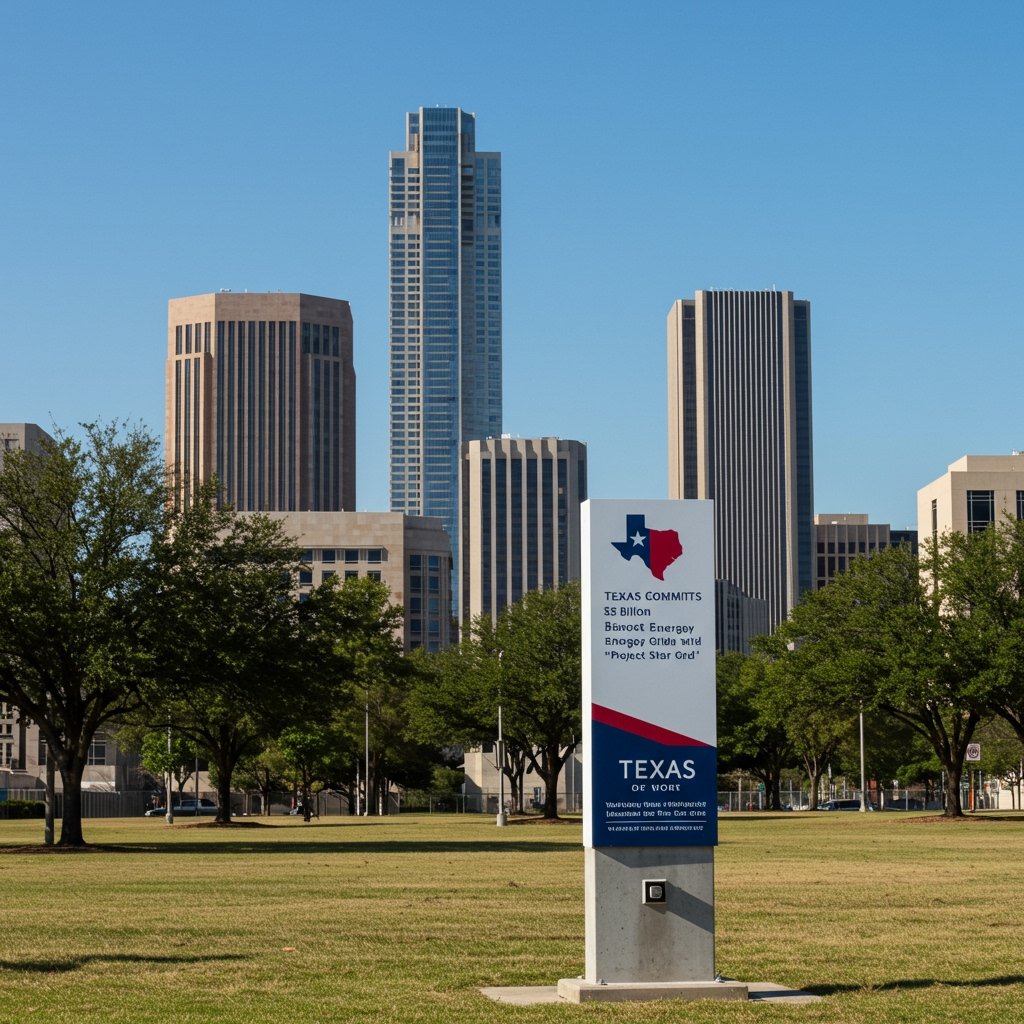Texas Governor Unveils $5 Billion “Project Lone Star Grid” to Secure Energy Future
Austin, TX – Governor Greg Abbott today, April 25, 2025, announced a landmark state initiative, dubbed “Project Lone Star Grid,” committing a substantial $5 billion from the state’s budget surplus towards fortifying Texas’s vital energy infrastructure. The comprehensive plan underscores a strategic shift towards state-led measures aimed at significantly enhancing grid reliability, increasing the availability of dispatchable power capacity, and reinforcing the principle of energy independence for the Lone Star State.
Speaking from Austin, Governor Abbott detailed the ambitious scope of “Project Lone Star Grid,” emphasizing its role in proactively addressing the evolving energy landscape and ensuring Texas remains self-reliant. The $5 billion allocation represents one of the most significant state-level investments in energy infrastructure in Texas history, reflecting a strong commitment to preventing future disruptions and ensuring power availability, particularly during periods of peak demand and extreme weather.
Pillars of Project Lone Star Grid
The core components of “Project Lone Star Grid” are multifaceted, focusing on immediate upgrades and strategic future investments. A significant portion of the allocated $5 billion is earmarked for targeted enhancements to existing natural gas facilities. These upgrades are intended to improve the resilience and operational reliability of these critical power sources, ensuring they can perform consistently when called upon, especially during high-stress events on the grid.
Another key element involves the implementation of battery storage pilot projects. These initiatives will be overseen directly by the Electric Reliability Council of Texas (ERCOT), the state’s grid operator. The pilot programs are designed to explore and integrate advanced energy storage solutions, which can play a crucial role in stabilizing the grid by storing excess energy and dispatching it quickly during surges in demand or drops in generation from intermittent sources.
Furthermore, “Project Lone Star Grid” includes robust incentives for the development of new power generation capacity. These incentives are strategically designed to encourage investment in resources that are critical for meeting Texas’s burgeoning energy needs, particularly during the demanding summer months when air conditioning use peaks. The goal is to bring more reliable, dispatchable power online to bolster the grid’s overall capacity and prevent shortages.
State-Led Strategy and Coordination
The initiative is a direct response to perceived vulnerabilities in the state’s energy system and is firmly rooted in a philosophy of state-led solutions. Governor Abbott explicitly positioned “Project Lone Star Grid” as a demonstration of Texas’s ability to manage its own energy destiny, reducing reliance on or countering potential impacts from federal energy policies that the state views as potentially detrimental to grid stability or energy affordability.
Coordination with state regulatory bodies is central to the project’s execution. The Public Utility Commission of Texas (PUC), which oversees ERCOT and various aspects of the state’s utility infrastructure, will work closely with the Governor’s office and other stakeholders to implement the various components of the plan. This collaborative approach is intended to ensure that the funding is deployed efficiently and effectively, aligning with regulatory requirements and grid stability objectives.
Investing in Reliability and Independence
The decision to dedicate $5 billion from the state’s budget surplus underscores the urgency and priority the state government places on energy reliability. The surplus funds provide a unique opportunity to make significant, one-time investments that can yield long-term benefits for the grid and for Texas residents and businesses. By targeting upgrades to natural gas infrastructure, investing in innovative battery storage technologies, and incentivizing new dispatchable generation, the state aims to create a more robust and resilient energy system capable of withstanding future challenges.
Grid hardening efforts funded by the project will focus on making physical infrastructure more resistant to environmental factors and operational stresses. This could involve measures such as weatherization of power plants, strengthening transmission lines, or improving substation security. The specific projects funded under this umbrella will be determined based on detailed assessments of grid vulnerabilities.
Increasing dispatchable power capacity is a critical objective, as these resources, unlike intermittent renewable sources, can be turned on or off as needed to meet demand fluctuations and provide essential grid stability services. The incentives offered through “Project Lone Star Grid” are expected to stimulate investment in technologies capable of providing this reliable, on-demand power.
The emphasis on energy independence reinforces Texas’s unique position as the only state with its own independent grid system (ERCOT). “Project Lone Star Grid” aims to strengthen this independence by ensuring the state has sufficient internal resources and infrastructure to meet its energy needs without relying on external grids or being unduly influenced by federal regulations that may not align with Texas’s specific energy market structure and priorities.
Forward Outlook
The successful implementation of “Project Lone Star Grid” is anticipated to bolster consumer confidence in the grid, attract further investment in the state’s energy sector, and support continued economic growth. The project represents a proactive measure to safeguard Texas’s economy and quality of life against potential future energy crises.
State officials, in conjunction with ERCOT and the PUC, will be responsible for developing specific program details, eligibility criteria for incentives, and timelines for the battery storage pilot projects and natural gas facility upgrades. The $5 billion investment marks a pivotal moment in Texas’s ongoing efforts to secure a reliable and independent energy future for its nearly 30 million residents and vast industrial base.
The initiative is expected to generate significant economic activity through infrastructure development and job creation in the energy sector. As details of the project’s execution phase emerge, stakeholders across the state will be closely watching the progress of “Project Lone Star Grid” and its impact on the reliability and resilience of the Texas energy grid. The long-term success will be measured by the grid’s performance during future periods of high demand and challenging conditions, ultimately aiming to prevent a recurrence of past reliability issues.






